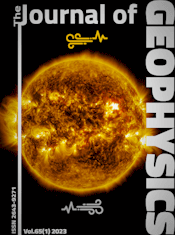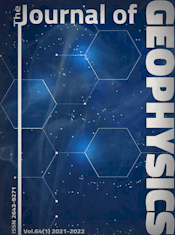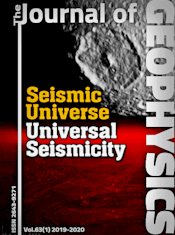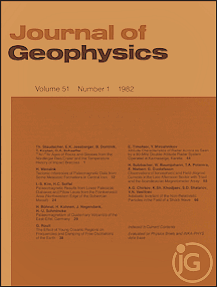Three-dimensional seismic ray tracing
Article Sidebar

Vols. 1-18 (1924-1944), ISSN 0044-2801
Main Article Content
Abstract
Two methods for tracing seismic rays between 2 given end points through three dimensional, continuously varying velocity structures are available. This paper describes and compares them for problems of practical interest and for analytical ray paths through an idealized velocity structure. One method involves "shooting" the ray from one point with a given starting direction and then modifying this starting direction until the ray emerges at the desired target, while the other method involves "bending" an initial path between the end points until it satisfies the principle of stationary time. For most of the models investigated, "bending" is computationally faster than "shooting" by a factor of 10 or more. The "bending" method can be modified to deal with discontinuities in the velocity model, and can also be adapted for use in conjunction with a table of distances as a function of ray parameter when the three dimensional anomaly influences only a small fraction of the total ray path. The geometrical spreading effect on the amplitude of the ray may be retrieved easily from the "bending" solution.
 ARK: https://n2t.net/ark:/88439/y041002
ARK: https://n2t.net/ark:/88439/y041002
Permalink: https://geophysicsjournal.com/article/133
Article Details
References
Barnes, A., Solomon, L.P. (1973) Some curious analytical ray paths for some interesting velocity profiles in geometrical acoustics. J. Acoustical Soc. Am. 53:147-155
Bulirsch, R., Stoer, J. (1966) Numerical treatment of ordinary differential equations by extrapolation methods. Numer. Math. 8:1-13
Chander, R. (1975) On tracing seismic rays with specified end points. J. Geophys. 41:173-177
Chernov, L.A. (1960) Wave propagation in a random medium. Dover, New York
Davies, D. (1972) Julian, B.R.: A study of short period P-wave signals from Longshot. Geophys. J. 29:185-202
Eliseevnin, V.A. (1965) Analysis of waves propagating in an inhomogeneous medium. Soviet PhysicsAcoustics 10:242-245
Engdahl, E.R. (1973) Relocation of intermediate depth earthquakes in the central Aleutians by seismic ray tracing. Nature Phys. Sci. 245:23-25
Engdahl, E.R., Sleep, N.H., Lin, M.T. (1977) Plate effects in North Pacific subduction zones. Tectonophysics 37:95-116
Jacob, K.H. (1970) Three-dimensional seismic ray tracing in a laterally heterogeneous spherical earth. J. Geophys. Res. 75:6685-6689
Jacob, K.H. (1972) Global tectonic implications of anomalous seismic P travel times from the nuclear explosion Longshot. J. Geophys. Res. 77:2556-2573
Julian, B.R. (1970) Ray tracing in arbitrarily heterogeneous media. Tech. Note 1970-45, Lincoln Laboratory. MIT, Lexington, MA USA
Keller, H.B. (1968) Numerical methods for two-point boundary-value problems. Blaisdell, Waltham, MA USA
Roberts, S.M., Shipman, J.S. (1972) Two-point boundary value problems: Shooting methods. Elsevier, New York
Sleep, N.H. (1973) Teleseismic P-wave transmission through slabs. Bull. Seism. Soc. Am. 63:1349-1373
Solomon, S.C., Julian, B.R. (1974) Seismic constraints on ocean-ridge mantle structure: Anomalous faultplane solutions from first motions. Geophys. J. 38:265-285
Sorrels, G.G., Crowley, J.B., Veith, K.F. (1971) Methods for computing ray paths in complex geological structures. Bull. Seism. Soc. Am. 61:27-53
Toksi:iz, M., Nafi, J., Minear, W., Julian, B.R. (1971) Temperature field and geophysical effects of a downgoing slab. J. Geophys. Res. 76:1113-1138
Wesson, R.L. (1971) Travel-time inversion for laterally inhomogeneous crustal velocity models. Bull. Seism. Soc. Amer. 61:729-746
Wilkinson, J.H. (1965) The algebraic eigenvalue problem. Clarendon Press, Oxford








